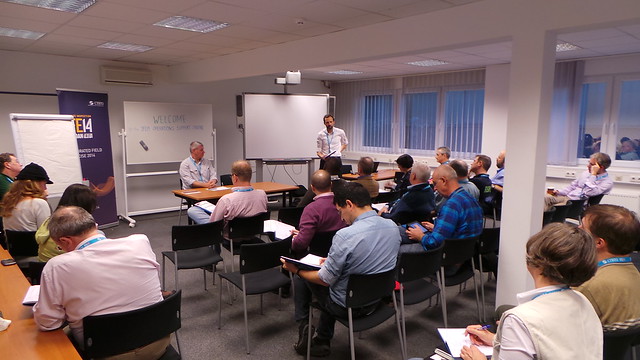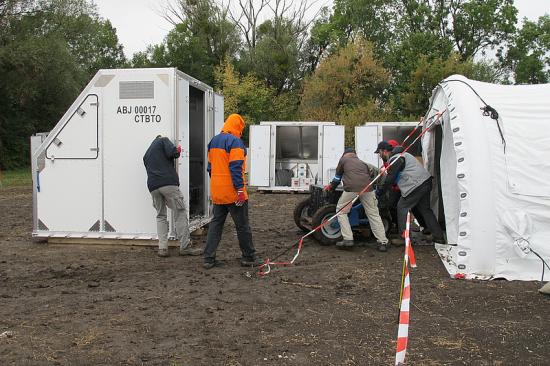Integrated Field Exercise 2014 (IFE14)
IFE14 was an Integrated Field Exercise to simulate an almost entire on-site inspection (OSI) in Jordan from 3 November to 9 December 2014 organised by the Preparatory Commission for the Comprehensive Nuclear-Test-Ban Treaty Organization (CTBTO). During IFE14 the inspection team conducted a meticulous search of a clearly defined inspection area to establish whether or not a nuclear explosion had been conducted. The exercise was in response to a technically realistic and stimulating but fictional scenario.
IFE14 objectives are to test the following in an integrated manner:
- All the phases of an OSI: launch, pre-inspection, inspection and post-inspection;
- Fifteen out of the 17 inspection techniques listed in the Treaty—a significant development on the technologies tested at the previous integrated field exercise in 2008 (IFE08); and
- Newly developed operational elements of an OSI such as an enhanced operations support centre, an improved in-field communications system and a rapid deployment system for transporting tons of inspection equipment anywhere in the world.
Background
Upon entry into force of the Comprehensive Nuclear-Test-Ban Treaty (CTBT), an on-site inspection (OSI) will become the final verification measure conducted to ascertain whether or not a nuclear explosion has taken place.
Any State Party will then have the right to request the inspection of an area where it believes a nuclear explosion may have been carried out in violation of the CTBT. The Executive Council will need to approve any request before it is carried out.
Inspection Phases
Launch Phase
An OSI is initiated by a request from a State Party on the basis of a suspicious event. Such an event would most likely have been detected by the International Monitoring System (IMS), but data produced by national technical means of verification can also be invoked to justify an OSI request.
The request for an OSI triggers a chain of activities including:
- The CTBTO's Director-General communicates with the State Parties and works with the organization's executive body, the Executive Council, to either approve or refuse the request within 96 hours of receiving it.
- At the same time, an Operations Support Centre (OSC) is established at the CTBTO Headquarters to initiate all administrative and operational tasks to get the inspection team in the field as soon possible after the Executive Council approves an OSI.
The launch phase finishes with the approval of the OSI when the Director-General issues the finalized inspection mandate outlining the details of the planned inspection.
Deploying the inspection team into the field is extremely time-critical because there is only a narrow time window during which some of the conclusive evidence of a nuclear explosion can be obtained.
Pre-Inspection Phase
The pre-inspection phase covers the arrival of the inspection team in the country where the OSI is to take place. This involves a range of procedures at the point of entry (negotiations, briefings, equipment checking), the transfer of the inspection team from the point of entry (usually an airport) to the inspection area, and establishing the base of operations.
Inspection Phase
The inspection phase is commonly divided into two parts – an initial period and a continuation period. During the initial period, the inspection team begins with the least intrusive techniques and submits a progress report to the Executive Council no later than 25 days after the inspection has been approved.
If the Executive Council allows the inspection to continue, the inspectors can use more intrusive techniques such as ground penetrating radar and active seismic surveys. During IFE14, the inspection team will test almost all the techniques approved by the Treaty.
Post-Inspection Phase
Once the inspection is declared over, the inspection team submits a report of its activities and findings along with a description of the cooperation granted by the inspected State Party. The Director-General forwards the report to all States Parties and the Executive Council which assesses whether non-compliance with the Treaty has occurred.
In parallel, the inspection team dismantles the base of operations, repacks all equipment and departs from the inspected State Party.




The installation of the base of operations involves moving tons of scientific and non-scientific equipment.

The inspection team dismantle the base of operations during Build-up Exercise IV.







